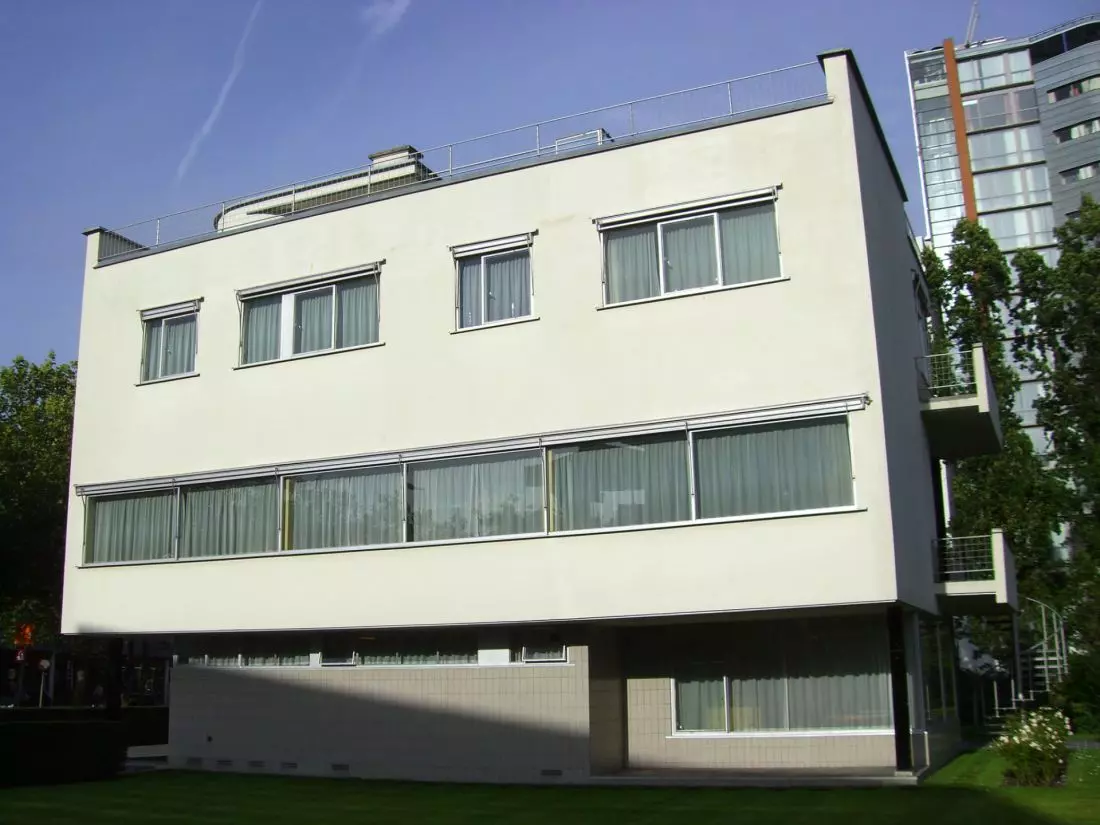demand windows in all rooms!
Solutions from Paimio or Hilversum can be found in the residential architecture of the interwar period. Corbusier's "lumps in the sun" were meant to heal societies tormented by life in overcrowded and polluted cities. In the pages of "Toward Architecture," the Swiss architect postulated
Demand a sunlit bathroom in one of the largest rooms, for example, in the former living room. In its wall there should be large windows, preferably facing the terrace for sunbathing; for this, porcelain sinks, a bathtub shower and gymnastic instruments (...) Demand ventilators and windows in all rooms. Teach your children that a house is only habitable if there is plenty of light and the parquet floors and carpets are clean.
Albertus Sonneveld's house in Rotterdam, designed by Johannes Brinkmann and Leendert van der Vlugt. Spa-inspired elements such as the roof terrace and large glazing have grown almost to become the "must-have program" of modernist villas
photo: Błażej Ciarkowski
The flat roof became an additional terrace for sunbathing. The same function was performed by balconies and loggias, with which most apartments in newly designed multi-family buildings were equipped. It was postulated that the blocks should be erected on a north-southaxis, so that individual apartments were provided with optimal sunlight. Architects paid attention to the soothing effect of contact with nature - hence the modernists' aspirations to blur the boundary between inside and outside. Glass ribbons of horizontal windows and the whiteness of the walls spoke of both the ideological and physical purity of the new architecture.
A multi-family building on the Hansaviertel estate in Berlin, designed by Walter Gropius and TAC. Having wide windows, balconies and loggias became a right of tenants, not a privilege
photo: Blazej Ciarkowski
How will Covid-19affect architecture?
Both TB and the modernist obsession with hygiene today remain hazy memories of the problems designers faced decades ago. A number of sanatorium-inspired solutions have entered the modern architectural vocabulary permanently. Could the current situation and the threat of the Covid-19virus have a similar impact on the future of architecture?
Let's start with a simple simulation. Imagine a world without public buildings. If museums make their collections available online, and academic lectures are held in web-auditoriums, then perhaps instead of another edifice, a new, huge server room would be the logical solution? An example is the Russian pavilion at this year's Venice Biennale, which was moved to virtual reality. Are sports stadiums and arenas needed now that the major leagues are planning games without fans? NBA authorities are considering barracks the teams in one place and finishing the aborted season with empty stands. Fans will be left with home seating and a high-speed Internet connection.
As we move more and more activities to the home zone, we face obstacles that stem directly from its architecture. For the most part, our "living machines" are not tailored to be "living and working machines." We have created an environment tailored to a certain way of functioning and lifestyle, which does not always pass the test in times of epidemic threat. Designers are increasingly mentioning the programming of multifunctional spaces that can be a home, an office, a nursery or an exercise room. So are we in for a revolution on the scale of the modernist one?
Architects say the pandemic should make us think about the future of construction. George Ranalli calls for a return to the past understood as humility towards natural conditions. Duo Dickinson speaks in a similar vein. Many designers see the disaster as an opportunity to change the way we design the urban environment - streets, public spaces.
It's a chance to reduce urban inequality, they write.
We will probably soon find out whether a new generation of designers and decision-makers has the energy to match the modernist revolutionaries of the 1920s. In the meantime, my inner skepticism speaks with the voice of the aged Oscar Niemeyer. The more than 100-year-old architect must have experienced more than one disappointment during his long and fruitful life. "Architecture changes nothing" - he used to say, "always serves the rich."





























